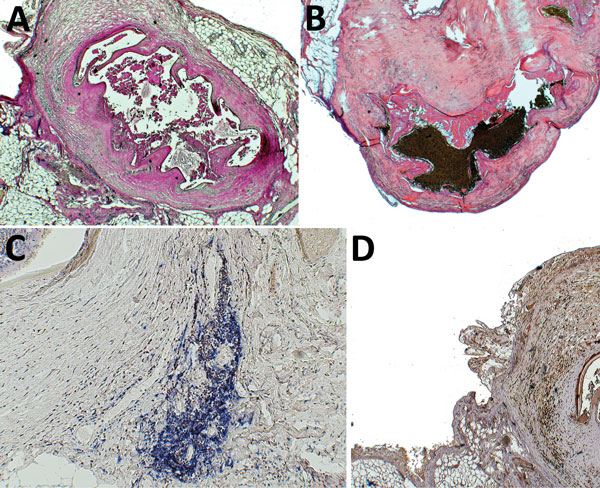Volume 22, Number 8—August 2016
Synopsis
Co-infections in Visceral Pentastomiasis, Democratic Republic of the Congo
Figure 2

Figure 2. Histologic and immunohistochemical analyses of resected pentastomid lesions from patients in Sankuru District, Democratic Republic of the Congo, 2014–2015. A) Typical necrotic pentastomid lesion from patient 5. Internal structures of the larvae are decayed; only the directly surrounding exuvia following the annulated body of the parasite and the fibrous capsule are visible. This organism has been moleculary identified as A. armillatus. Periodic acid Schiff stain; original magnification ×2.5. B) Necrotic pentastomid lesion from patient 1, with a similar appearance. This organism has been molecularly identified as Raillietiella sp. Hematoxylin and eosin stain; original magnification ×2.5. C) Immunohistochemical staining of B cells (blue) and T cells (brown) surrounding the A. armillatus lesion from patient 5. The lymphocytes cluster locally adjacent to the lesion. Mouse monoclonal anti-CD20 and rabbit monoclonal anti-CD3 stain with hematoxylin counterstain; original magnification ×2.5. D) Immunohistochemical staining for TGF-β (brown) around an A. armillatus larva of patient 5. Immunoreactivity is seen surrounding the lesion and nonspecifically within the parasite larva itself. Rabbit polyclonal IgG with hematoxylin counterstain; original magnification ×2.5.